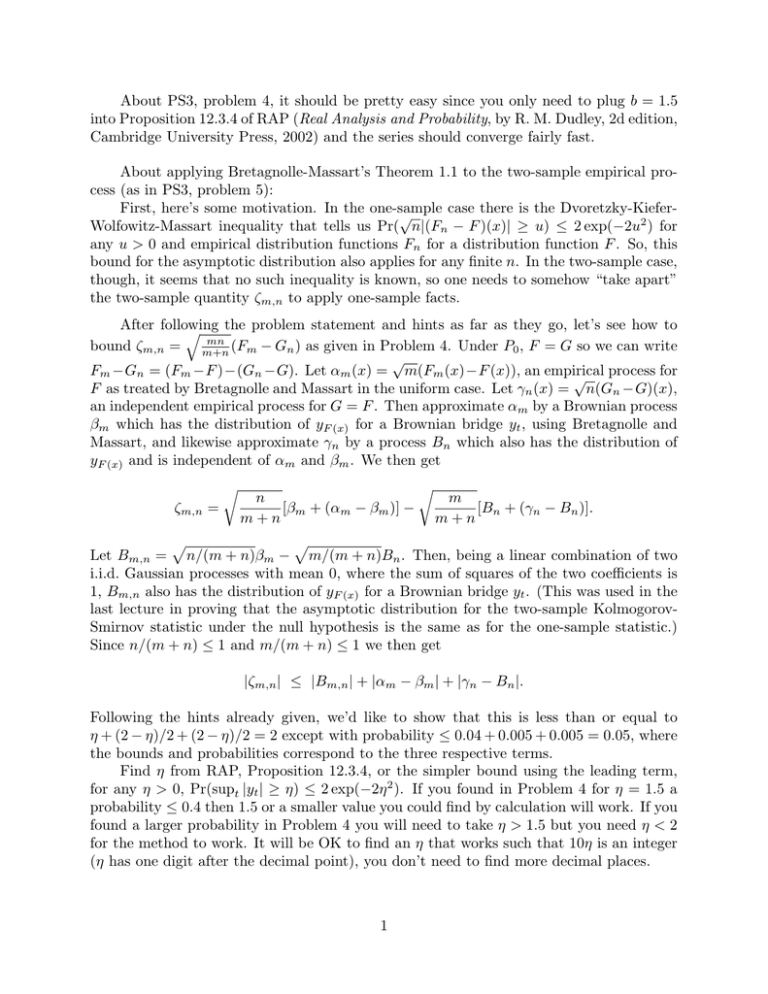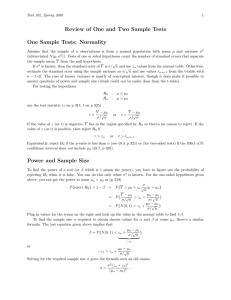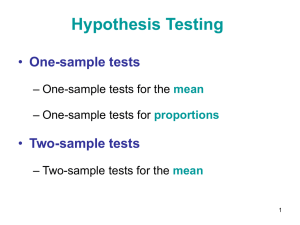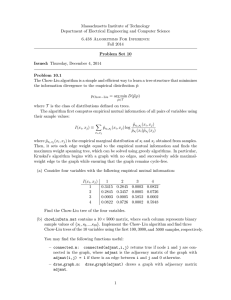About PS3, problem 4, it ... Real Analysis and Probability b
advertisement

About PS3, problem 4, it should be pretty easy since you only need to plug b = 1.5 into Proposition 12.3.4 of RAP (Real Analysis and Probability, by R. M. Dudley, 2d edition, Cambridge University Press, 2002) and the series should converge fairly fast. About applying Bretagnolle-Massart’s Theorem 1.1 to the two-sample empirical process (as in PS3, problem 5): First, here’s some motivation. In the one-sample case there is the Dvoretzky-Kiefer√ Wolfowitz-Massart inequality that tells us Pr( n|(Fn − F )(x)| ≥ u) ≤ 2 exp(−2u2 ) for any u > 0 and empirical distribution functions Fn for a distribution function F . So, this bound for the asymptotic distribution also applies for any finite n. In the two-sample case, though, it seems that no such inequality is known, so one needs to somehow “take apart” the two-sample quantity ζm,n to apply one-sample facts. After following the problem statement and hints as far as they go, let’s see how to � mn bound ζm,n = m+n (Fm − Gn ) as given in Problem 4. Under P0 , F = G so we can write √ Fm −Gn = (Fm −F )−(Gn −G). Let αm (x) = m(Fm (x)−F (x)), an empirical √ process for F as treated by Bretagnolle and Massart in the uniform case. Let γn (x) = n(Gn −G)(x), an independent empirical process for G = F . Then approximate αm by a Brownian process βm which has the distribution of yF (x) for a Brownian bridge yt , using Bretagnolle and Massart, and likewise approximate γn by a process Bn which also has the distribution of yF (x) and is independent of αm and βm . We then get � ζm,n = n [βm + (αm − βm )] − m+n � m [Bn + (γn − Bn )]. m+n � � Let Bm,n = n/(m + n)βm − m/(m + n)Bn . Then, being a linear combination of two i.i.d. Gaussian processes with mean 0, where the sum of squares of the two coefficients is 1, Bm,n also has the distribution of yF (x) for a Brownian bridge yt . (This was used in the last lecture in proving that the asymptotic distribution for the two-sample KolmogorovSmirnov statistic under the null hypothesis is the same as for the one-sample statistic.) Since n/(m + n) ≤ 1 and m/(m + n) ≤ 1 we then get |ζm,n| ≤ |Bm,n | + |αm − βm | + |γn − Bn |. Following the hints already given, we’d like to show that this is less than or equal to η + (2 − η)/2 + (2 − η)/2 = 2 except with probability ≤ 0.04 + 0.005 + 0.005 = 0.05, where the bounds and probabilities correspond to the three respective terms. Find η from RAP, Proposition 12.3.4, or the simpler bound using the leading term, for any η > 0, Pr(supt |yt | ≥ η) ≤ 2 exp(−2η 2 ). If you found in Problem 4 for η = 1.5 a probability ≤ 0.4 then 1.5 or a smaller value you could find by calculation will work. If you found a larger probability in Problem 4 you will need to take η > 1.5 but you need η < 2 for the method to work. It will be OK to find an η that works such that 10η is an integer (η has one digit after the decimal point), you don’t need to find more decimal places. 1





